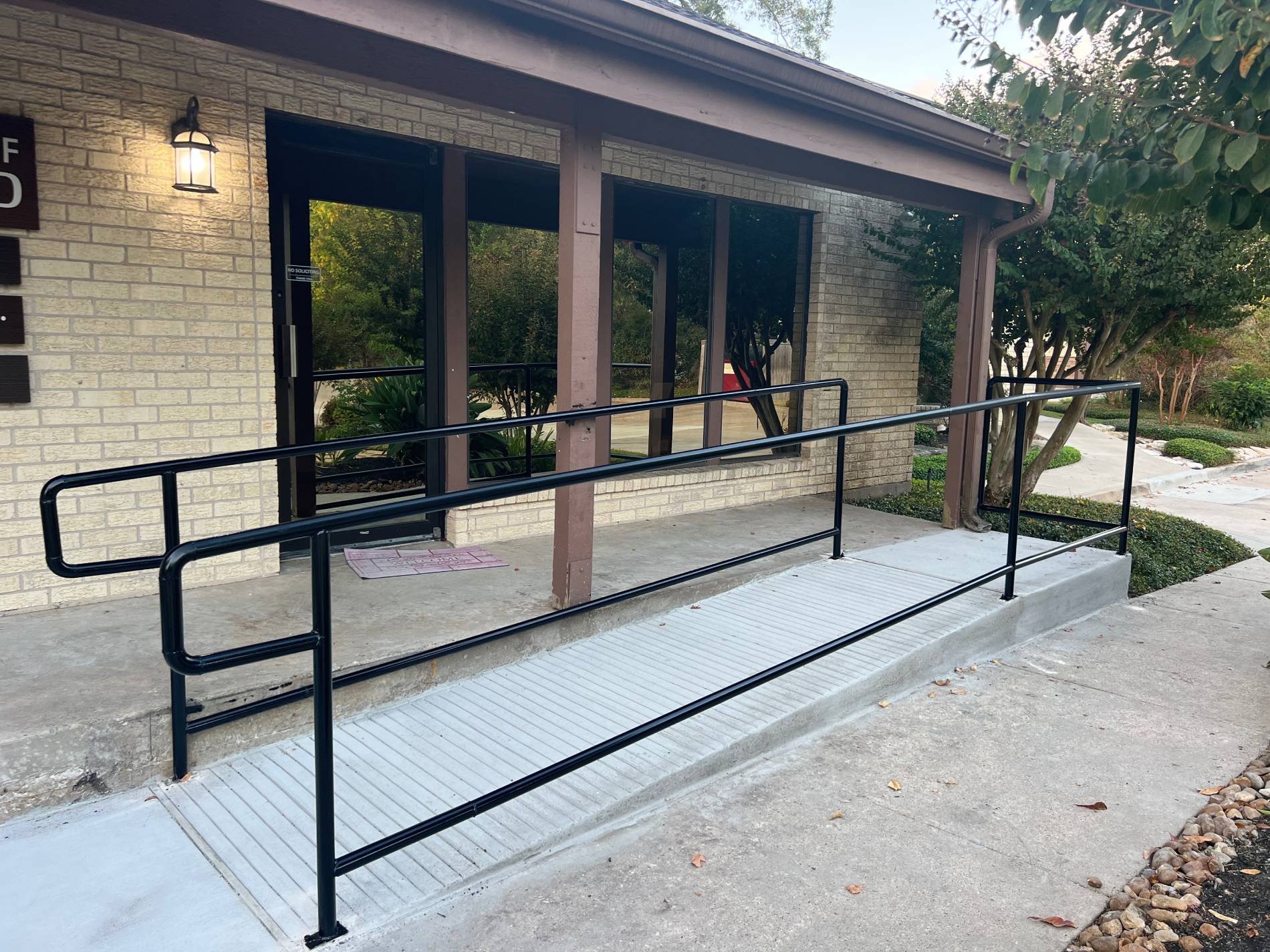
ADA Handicap Ramps In Houston & Beaumont TX
Many experts consider the Americans with Disabilities Act to be a landmark legislative effort to secure equal rights for all handicapped people. However, the ADA itself is so lengthy that few individuals have ever read it in its entirety. The ADA regulations include requirements for access ramps, parking spaces, interior aisles, and many other structural features. Even though it has been more than 30 years since the ADA was signed into law, its complexities have caused many property owners to misinterpret the regulations, thereby failing to achieve full compliance. One of the most misunderstood parts of the law involves the rules for ADA Handicap Ramps In Houston & Beaumont TX.
What Are ADA Handicap Ramps?
ADA handicap ramps in Houston and Beaumont TX are often referred to as wheelchair ramps. However, as any experienced ADA handicap ramps contractor can tell you, these ramps are not used solely by people who are confined to a wheelchair.
Houston ADA handicap ramps are also vital for ambulatory individuals who may need canes, crutches, or walkers due to a permanent or temporary mobility issue. People with respiratory issues or joint pain, or those carrying small children or heavy objects, sometimes choose or need to use these ramps. To be ADA-compliant, wheelchair ramps must meet a detailed set of specifications.
What Are the Rules for ADA Handicap Ramps Company?
Before exploring the specifications, it might be helpful to define some of the terms typically used by an ADA handicap ramps company.
- Run: This is the length of wheelchair ramps in their entirety or in a single section.
- Rise: This is how Houston and Beaumont TX ADA handicap ramps change in elevation from the start to the end of the run.
- Slope: The slope is expressed as a ratio comparing the rise to a specific length of the run.
Specifications for ADA Handicap Ramps in Houston and Beaumont TX?
Since the ADA is a federal law, it supersedes any local or state laws, so it is what every ADA handicap ramps company must follow. However, it is worth noting that some states and a few cities have passed ordinances that exceed the rules contained in the ADA. Thus, an ADA handicap ramps contractor must know whether there are additional regulations in place in the area. For example, building codes can contain different requirements for wheelchair ramps. Furthermore, the ADA has different rules for curb ramps and access ramps. However, in most cases, ADA handicap ramps in Houston must conform to the following specifications.
- The inside width of the ramp can be no less than 30 inches, and it cannot contain any obstructions.
- The run cannot exceed 30 feet in length. If this means that additional runs are required, each run must have a landing at both the bottom and top of the run. Landings must be at least 60 inches long, and the width cannot be less than the width of the ramp.
- A run cannot rise more than 30 inches along its entire length.
- Wheelchair ramps cannot have a slope that exceeds 1:12. To a Houston ADA handicap ramps professional, this means that the rise must be no greater than an inch for every 12 inches of the run’s length.
- Normally, the ramp must have handrails on both sides, and the handrails must be between 30 and 38 inches above the surface of the ramp.
Contact Pavement Service
To ensure that your ADA handicap ramps are fully compliant, reach out to Pavement Services. Our concrete installation services include ADA handicap ramps, parking lots, and commercial foundations, and we also offer concrete repairs. In addition, we offer parking lot striping, asphalt repairs, dust control, asphalt paving, asphalt seal coating, and cement stabilization services. We have been in business since 1980, earning an exceptional reputation for dependability, craftsmanship, and service. To request a free quote, or to discuss your specific needs, you can call our Houston and Beaumont TX office at (713) 661-9295. You can also use our online form to send us your information.





